Work to be done
Through the examination of paintings, maps, journals and historical artefacts students investigate the concept of convict ‘work’, study the First Fleet convicts’ former trades, compare the lives of Aboriginal and convict women plus get a taste of the power and hierarchy in the community of the new colony.
Key inquiry question #1
Why did Europeans settle in Australia?
Key inquiry question #2
What was the nature and consequence of contact between Aboriginal and/or Torres Strait Islander peoples and early traders, explorers and settlers?
Learning intention
Students are learning to:
- analyse paintings, maps, journals and artefacts as historical sources
- understand the daily life of First Fleet convicts
- recognise the challenges of living in a penal settlement
Success criteria
Students will be successful when they can:
- explain what life was like for a convict at work
- list the types of work completed by convicts
- describe the similarities and differences between Aboriginal and convict women’s work
Student Activities
Governor for a Day
Students experience the hierarchy of the colony for a day.
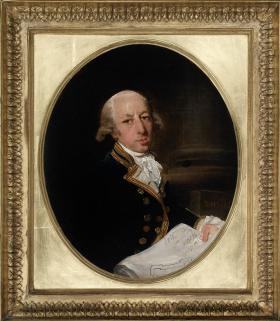
Off to Work
Students examine a map and artefacts to discover the different types of convict work in early Sydney.
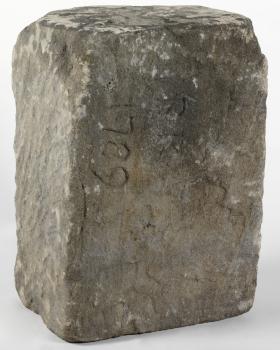
What job is this?
Students explore the different types of trades or work experience convicts brought with them from their life in England.
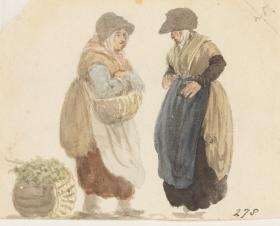
Women at work
Students compare the work of convict and Aboriginal women and uncover the story of Caroo.
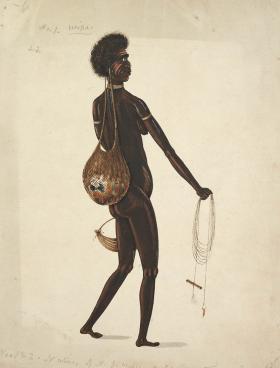
Guess the convict
Students guess the convict just by looking at portraits and challenge their preconceived thinking.
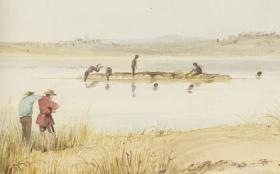
Convicts in Charge of Convicts
Students determine the advantages and disadvantages of being a convict overseer.
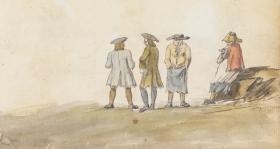
NSW Syllabus for the Australian Curriculum History K-10
A student:
- HT2-3 describes people, events and actions related to world exploration and its effects
- HT2-4 describes and explains effects of British colonisation in Australia
- HT2-5 applies skills of historical inquiry and communication
Stories of the First Fleet, including reasons for the journey, who travelled to Australia, and their experiences following arrival (ACHHK079)
Students:
- using a range of sources, investigate the everyday life of ONE of the following who sailed on the First Fleet and lived in the early colony: a soldier, convict, ex-convict, official
The nature of contact between Aboriginal people and/or Torres Strait Islanders and others, for example, the Macassans and the Europeans, and the effects of these interactions on, for example, families and the environment (ACHHK080)
Students:
- describe the nature of contact between Aboriginal people and/or Torres Strait Islander peoples and others, including Aboriginal resistance
- use sources to identify different perspectives on the arrival of the British to Australia
- outline the impact of early British colonisation on Aboriginal and Torres Strait Islander peoples' country.
Comprehension: chronology, terms and concepts:
- respond, read and write, to show understanding of historical matters
- use historical terms
Analysis and use of sources:
- locate relevant information from sources provided
Perspectives and interpretations:
- identify different points of view within an historical context
Empathetic understanding:
- explain how and why people in the past may have lived and behaved differently from today
Research:
- pose a range of questions about the past
- plan an historical inquiry
Explanation and communication:
- develop texts, particularly narratives
- use a range of communication forms (oral, graphic, written) and digital technologies
Continuity and change: changes and continuities due to British colonisation of Australia.
Cause and effect: reasons for a particular historical development
Perspectives: different points of view within an historical context
Empathetic understanding: how and why people in the past may have lived and behaved differently from today.
Significance: the importance and meaning of national commemorations and celebrations, and the importance of a person or event.
Contestability: historical events or issues may be interpreted differently by historians, eg British 'invasion' or 'settlement' of Australia.
Cross-curriculum priority:
- Aboriginal and Torres Strait Islander histories and cultures
General capabilities:
- Critical and creative thinking
Ethical understanding:
- Intercultural understanding
- Literacy
Stories of the First Fleet, including reasons for the journey, who travelled to Australia, and their experiences following arrival (ACHASSK085)
- investigating attitudes to the poor, the treatment of prisoners at that time, and the social standing of those who travelled to Australia on the First Fleet, including families, children and convict guards
- investigating daily life in the Botany Bay penal settlement and challenges experienced by the people there and how they were managed.
The nature of contact between Aboriginal and Torres Strait Islander Peoples and others, for example, the Macassans and the Europeans, and the effects of these interactions on, for example, people and environments (ACHASSK086)
- exploring the impact that British colonisation had on the lives of Aboriginal and Torres Strait Islander Peoples (dispossession; dislocation; and the loss of lives through conflict, disease, loss of food sources and medicines)
- considering whether the interactions between Europeans and Aboriginal and Torres Strait Islander Peoples had positive or negative effects
- examining paintings and accounts (by observers such as Watkin Tench and David Collins) to determine the impact of early British colonisation on Aboriginal Peoples' Country
Additional Information
The following information supports the above activities. Read the activities first.
General information about work
The settlement at Sydney was founded on convict labour – a form of slave or indentured labour. The British government wanted to use convicts as free labour to build the colony, with a focus on agricultural development. The convicts from the First Fleet were living in unique circumstances. There was no gaol building to put them in. The convicts were surviving in a type of open-air prison. There were no walls or fences to hold them in. If they ran away into the bush, they either died or returned emaciated and ill. After they recovered in hospital, some escapees were then punished with a flogging. Establishing the penal settlement was physically demanding on the convicts, and they often had limited food and shelter.
The male convicts were assigned jobs based on their previous trades or experience, such as carpenters, blacksmiths, brickmakers, farmers, stone mason. In 1788 the main tasks included clearing land, building tents and later ‘wattle and daub’ huts and brick dwellings.
Convict men insisted on the task work system. This meant convicts worked for the government at their daily task and once it was completed, they were free to build their own houses, tend their gardens and do what they wished. Arthur Phillip had to accept that or get no work done at all. This was especially important to the convict men when rations were low as they had no energy to complete the work. It was also in the interests of Arthur Phillip to have the convicts tend their own gardens so they may become self-sufficient and eventually “off the stores”. Government farms were also worked by convict men.
This new settlement was devoid of the coal or steam fuelled machinery which had ironically contributed to the broad loss of employment for Britain’s working classes that often resulted in the convicts’ new situation. Instead, they were reliant on the power of water, wind and their own strength. Although educated convicts who arrived later might work in colonial administration, if they were assigned to a free settler, they did whatever the settler required. They were mostly agricultural assignments, so they felled trees, cleared land, planted crops, or constructed farm buildings.
Activity 1 Answers
Q: Which group of people living in Warrane/Sydney has been overlooked in this task?
A: Aboriginal people
Activity 2 Information
Shingling Parties
Shingling parties were groups of men cutting down trees and splitting off pieces of wood to be used as shingles on a roof. The shingles were about 40cm long. The building of the hospital was commenced in March 1788 and had a roof of timber shingles.
Artefacts
Item 1: These items were used as brick moulds by convict brickmakers. The arrow indicated that it was government property known as ‘Government Broad Arrows’. The B.O. mark stands for Board of Ordnance.
Brickmaking was hard work and required three pieces of equipment, the mould, stock and strike. The mould was a four-sided wooden box, the stock was the ‘bottom’ removeable piece of the box with a raised timber shape called the ‘kick’ and the strike removed excess clay. The clay needed to be dug up, weathered and kneaded with water and sand. The mould was lined in sand. The clay was then thrown into the mould. The strike was used to clear the excess clay. The clay brick was then removed from the mould, left to dry out in the air/sun and then fired in a kiln at high temperature.
Did you know? The use of sand in the stock resulted in ‘sandstock’ bricks!
Captain Watkin Tench mentions in November 1790 that one of the master brickmakers, also a convict, had 21 convicts to assist him to make “30,000 tiles and bricks per month”.
Item 2: This brick is handmade from clay dug out of the ground. This actual brick was made by convicts in 1788 for the walls of the Governor's house.
Q: What uses did Aboriginal people have for this material used to make bricks?
A: Clay and ochre (derived from clay) were used as body decoration, for creating rock art and decorating possum skin cloaks. Wet clay was also used in their nawi/canoes to form a base for the fires. Please note that Aboriginal people used natural resources differently across Australia. [For more information on the use of fire in the canoes see Activity 4, Looking to learn, in the Food of the colony Learning Activity.]
Item 3: This sandstone was carved out of the ground by a stonemason using axes and picks in 1789. The marks are created by the pick. Stone was first used in the foundations of the Governor's house in May 1788.
Q: How did Aboriginal people use this type of stone?
A: Sandstone was used for sharpening axes and animal bones (used for sewing) and for shaping fish-hooks. Grinding stones, made of sandstone, were mainly used for food such as grinding seed and grain for flour and could also be used to prepare ochre pigment. Sandstone walls and caves were carved into to create artwork or rock carvings. Please note that Aboriginal people used natural resources differently across Australia.
The Governor's house was built of bricks with lime mortar in between them. It had a stone foundation and a roof of lightly burnt clay tiles. The wooden framed windows had glass that was brought out on the First Fleet ships from England.
Rushes
The roof of a hut was thatched with rushes which were dried out hollow stemmed plants growing near water. Rushcutters Bay is a suburb of Sydney.
Activity 3 Answers and Information
Q: Can you guess what additional task the iron shovels performed in the colony?
A: They were used to cook bread over the fire, although it made Governor Phillip very cross!
Flash language
The flash language was criminal underworld slang spoken in England and brought out to the new colony by convicts. It was formally known as ‘cant’ and informally as flash or kiddy language. During the early days of the colony an interpreter was often appointed by the court to translate! A flash language dictionary was written in 1819 by James Hardy Vaux, a former convict himself. For more information on this language go to the Talkin’ Like A Convict Learning Activity.
Occupations described – M male, F female
- currier (tans animal hides) M
- brazier (makes articles from brass) M
- milliner (hat maker) F
- wheelwright (maker of wheels for carts) M
- tambour worker (embroiderer) F
- bitt maker (maker of stirrup and bridle ‘bitts’ for horses) M
- pinheader (female trade, putting the head on a pin. Pin production included five different trades; cutting the metal rod, making the heads, putting on the heads, pointing – to make it sharp, and sticking them on paper to sell) F
- button stamper (metal buttons were ‘stamped’ or punched out of large metal sheets. They would also ‘brand’ or stamp the back of the buttons with company names or initials.) Appears to be M
- fiddler (person who plays the fiddle/violin – if they have one!) M
- leather breeches maker (Breeches are men’s trousers cropped just below the knee. Upper class Englishmen wore buckskin breeches during the day and silk breeches for the evening. Tradesmen and hunters wore breeches made of leather or coarse cloth.) M
- shoe binder (stitched the parts of a shoe together before the sole went on) Mostly F or old M
- furrier (worker, seller or producer of furs) F
- stay maker (corset maker) M & F
- silk winder (a female job of winding the raw silk threads onto reels from soaked cocoons) F
- hawker (street seller of small wares, often itinerant going from village to village) M & F
- hoop maker (petticoat hoop maker) F
- charwoman (part-time female cleaner) F
- waterman (worked on rivers transporting people by boat) M
Activity 4 Information
Women
There are few records from the point of view of the convict class at this time in Australian history. In the records we have, women have sometimes been described as lazy and idle but there were few employment opportunities for them. The majority of all convict women were from urban areas of England and semi-skilled or unskilled workers - 65% of the women on board the Lady Penrhyn were domestic servants. There were also milliners, dressmakers, lace/silk weavers, needleworkers, pedlars and also a glove-maker and an artificial flower maker. Some of these skills were not useful in the newly established Sydney Town, and others underutilised and undervalued.
Female convicts were mostly employed in domestic work as maids and housekeepers in 1788. They may have been assigned to government officials, or the officers and soldiers. Others married fellow convicts and lived as a family. Many convict women had multiple partners and fathers to their children. Sometimes it was safer to find a new partner than be on your own. Women and children were often deserted and left with few options. Later some were even given the job of cooking and cleaning as a housekeeper/hutkeeper for groups of convicts in large huts on agricultural areas like Parramatta and Toongabbie. Much later Female Factories were built (the first in Parramatta in 1804) to house female convicts and they worked spinning wool and flax and living conditions were sub-standard with the poor sanitation and overcrowding leading to disease. Free settlers would choose a housekeeper or wife from these ‘factories’.
Although women with young infants were not usually also engaged in paid or officially allocated employment, they were playing an important role in developing the colony by establishing a community and raising the next generation of colonists. European children who were born here were often referred to as ‘currency lads and lasses’.
Women found it difficult to return to England, as you had to pay for your fare and most of them did not have paying jobs. If a convict, or ex-convict, woman had a job as the housekeepers for an officers or government official, she did not get paid as she had free food and lodging. In Britain a woman doing the same job as live-in staff would have been paid as well. There are a few examples of ex-convict women, having been assigned to a kindly wealthy settler, having their tickets to England paid for by them. Ex-convict men could get back to England by working as crew on the ships.
Activity 5 Answers
Q: Who is the convict?
A: The correct answer is Touglra, an Aboriginal man who was also a convict.
Q: Who was on the First Fleet?
A: The correct answer is Watkin Tench.
Image 1: John Harris was a naval surgeon who arrived in NSW in 1790 on Surprize as part of the Second Fleet.
Image 2: Toulgra was an Eora man and Bennelong’s nephew. He is one of the first Aboriginal ‘convicts’ to leave the Australian mainland having been exiled to Norfolk Island for seven years in 1805. For information on Toulgra see here.
Image 3: Watkin Tench was a captain in the marines who arrived in NSW in 1788 on Charlotte as part of the First Fleet.
Image 4: John Macarthur was a soldier and farmer who arrived in NSW in 1790 on Scarborough as part of the Second Fleet.
Source list for images details in student activities
Off to Work
Image 1: Thomas Watling, A direct north general view of Sydney Cove ... 1794 ... / oil painting, ca. 1794
What Job is This?
Image 1: Set of thirty-one pins, 1788, 1788
Image 2: Set of thirty-one pins, 1788, 1788
Convicts in Charge of Convicts
Image 1: Artist unknown, Watercolour drawings of sentimental genre scenes, ca. 1760-1800, ca 1760-1800